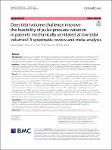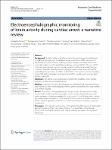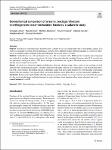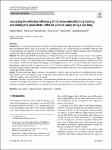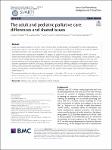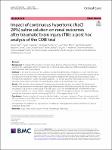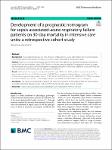Search
Author
- Daqing, Ma (3)
- Alexis, Ferré (2)
- Anna, Lybeck (2)
- Ashish K., Khanna (2)
- next >
Subject
- intensive care unit (8)
- acute respiratory dist... (5)
- chronic obstructive pu... (5)
- ICU (5)
- next >
Date issued
Has File(s)
Search Results
Pulse pressure variation (PPV) has been widely used in hemodynamic assessment. Nevertheless, PPV is limited in low tidal volume ventilation. We conducted this systematic review and meta-analysis to evaluate whether the tidal volume challenge (TVC) could improve the feasibility of PPV in patients ventilated at low tidal volumes. |
To date cardiac arrest (CA) remains a frequent cause of morbidity and mortality: despite advances in cardiopulmonary resuscitation (CPR), survival is still burdened by hypoxic–ischemic brain injury (HIBI), and poor neurological outcome, eventually leading to withdrawal of life sustaining treatment (WLST). The aim of CPR is cardiac pump support to preserve organ perfusion, until normal cardiac function is restored. However, clinical parameters of target organ end-perfusion during CPR, particularly brain perfusion, are still to be identified. In this context, electroencephalography (EEG) and its derivatives, such as processed EEG, could be used to assess brain function during CA. |
Osteoporosis-related proximal femur fractures continue to increase significantly due to demographic change. This study was designed to evaluate the biomechanical stability of two different fixation methods (cerclage vs. screw) for refixation of a trochanter minor fragment in the pertrochanteric fractures in cadaveric bones. |
As volatile anaesthetic gases contribute to global warming, improving the efficiency of their delivery can reduce their environmental impact. This can be achieved by rebreathing from a circle system, but also by anaesthetic reflection with an open intensive care ventilator. We investigated whether the efficiency of such a reflection system could be increased by warming the reflector during inspiration and cooling it during expiration (thermocycling). |
Adult and pediatric palliative care (PC) share common aims and ethical principles but differ in many organizational and practical aspects. The aim of this narrative review is to analyze these differences and focus on which key aspects of pediatric palliative care could integrate adult services for a better care of suffering patients. |
Exercise intolerance is among the most common symptoms experienced by patients with chronic obstructive pulmonary disease (COPD), which is associated with lung dynamic hyperinflation (DH). There was evidence that positive expiratory pressure (PEP), which could be offered by less costly devices, could reduce DH. The purpose of this study was to evaluate the efficacy and safety of long-term domiciliary use of PEP device in subjects with COPD. |
The limitation of activity due to dyspnea in chronic obstructive pulmonary disease (COPD) patients is affected by diaphragmatic dysfunction and reduced lung function. This study aimed to analyze the association between diaphragm function variables and forced expiratory volume in the first second (FEV1) and to estimate the clinical significance of diaphragm function in the correlation between COPD severity and lung function. |
To evaluate if the increase in chloride intake during a continuous infusion of 20% hypertonic saline solution (HSS) is associated with an increase in the incidence of acute kidney injury (AKI) compared to standard of care in traumatic brain injury patients. |
Acute respiratory failure is a type of sepsis complicated by severe organ failure. We have developed a new nomogram for predicting the 30-day risk of death in patients through a retrospective study. |
To validate the pressure–time index of the inspiratory muscles as a non-invasive index of inspiratory muscle function in spontaneously breathing infants by comparing it against the gold-standard pressure–time index of the diaphragm. Prospective observational cohort study of consecutive infants breathing unsupported in room air in a tertiary neonatal intensive care unit, studied prior to discharge from neonatal care. |

